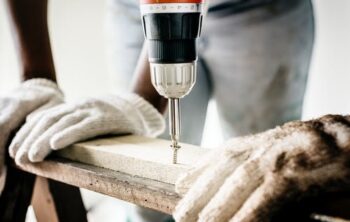When a pet goes through surgery, the period afterward is crucial for healing and recovery. This time of rest and recovery is not always easy for pets, similar to how people find it difficult after having an operation. Regardless of whether your pet has had a common surgical procedure like spaying or neutering or a more serious operation like tumor removal, understanding how to support their recovery is vital. This article is meant to guide you about the various stages of recovery and methods of care after vet surgery.
An Overview on Veterinary Surgery
Veterinary surgery refers to the branch of animal medicine that tackles a wide range of procedures involving your pets. A vet surgeon, just like a human surgeon, carries out a number of procedures, from the more simple ones to highly complex operations.
- Pet Surgical Procedures: The type of surgical procedures that your pet may undergo can differ significantly. It could be something as common as sterilization or neutering, or it could be a complex surgery such as removing a tumor or operating on an internal organ.
- Advances in Vet Medicine: Modern veterinary science is continuously improving. There are now more sophisticated methods of surgical procedures available that make the treatment more effective while less painful and uncomfortable for your pet.
- Post-operative Care: Looking after your pet following an operation, also known as post-operative care, is as crucial as the surgery itself. This period of care has a direct impact on the speed of recovery and the overall healing process.
Pet Post-operative Care
When your pet has completed a surgical procedure, the focus leads into the stage of care known as post-operative care. This stage is critical for the recovery of your pet and ensuring that the wound or incision heals properly without any complications.
- Pet Pain Management: After an operation, your pet might experience discomfort and pain. Therefore, it becomes essential to manage your pet’s pain through medication to keep them calm and happy. Your vet will most likely prescribe some form of pain relief that you must administer according to schedule.
- Home Rehabilitation for Pets: Another part of post-operative care is rehabilitating your pet at home. It might be more difficult for your pet to do simple tasks that they usually do easily. As such, you may have to step in and help them around the house.
- Pet Health Check-ups: Throughout the recovery period, regular visits to the vet are necessary for them to adequately monitor your pet’s condition. Frequent health check-ups help to evaluate progress and monitor for potential complications.
Physical therapy for pets is another vital part of your pet’s recovery. Just as people who go through surgery need physical therapy, pets also need it. However, unlike humans who can tell us what their issues are, pets can’t articulate their needs. Therefore, the next section goes over how geriatric vet care in Stroudsburg, PA is a vital part of ensuring your aging pet’s recovery process.
Pet Physical Rehabilitation
Physical rehabilitation for pets offers similar techniques to those found in human physical therapy. It’s a practice that is often recommended following vet surgery to boost the recovery process and ensure your pet regains mobility and strength.
- Underwater Treadmill Therapy: This type of therapy, also referred to as hydrotherapy for pets, helps improve movement, boost flexibility, and strengthen muscles. This type of therapy is beneficial for pets with arthritis or hip dysplasia, among other conditions. It works by allowing the pet to move their joints and muscles without bearing their full weight, which makes it less stressful on their bodies.
- Physical Therapy for Pets: Physical therapy for pets is a broad term and can include a variety of treatments. Some of these treatments include massage, chiropractic care, and acupuncture. These treatments can speed up the recovery process and ensure a smooth recovery.
- PROM Exercises for Pets: Passive Range of Motion, or PROM, exercises are used to maintain flexibility in your pet’s joints after surgery. Just like humans benefit from this type of exercise after surgery, pets too can reap the benefits, which include prevention of joint stiffness and maintenance of joint health.
As the veterinary world progresses, one can expect the existence of more animal rehabilitation centers offering holistic treatments for all creatures. Such treatments are especially essential in providing vet geriatrics. In other words, it gives a comprehensive suite of cat and dog surgery services geared towards mid-to-late life issues seen in aging pets.
Vet Geriatrics
As your pet grows older, it is natural to see some health issues appear. These health conditions are often more serious in nature, making vet geriatrics a critical specialty within the field of veterinary science. Vet geriatrics focus on taking care of older pets and ensuring they have a good quality of life as they live their golden years.
- Age-related Pet Health Problems: These are health problems that are more likely to appear as your pet ages. They include conditions such as arthritis, kidney disease, or cancer, which may require surgery to handle effectively.
- Geriatric Pet Care: As pets age, they require a different type of care compared to when they were younger. Regular health check-ups, nutritious food, and being mindful of any behavioral changes are all part of ensuring their longer life.
- Nutritional Counseling for Pets: Dietary needs change as your pet ages. Therefore, vet clinics and animal hospitals often offer nutritional counseling to ensure they get the right nutrients in their diet.
Importance of Rehabilitation in Vet Surgery
Post-operative rehabilitation in a veterinary rehab is crucial to the pet’s healing process. It helps improve mobility, reduce pain, and speed up the recovery process. It guarantees that your pet is back on their feet and enjoying life as soon as possible.
- Rehabilitation Exercises for Pets: These exercises can range from basic stretches to harder tasks geared towards restoring muscle strength and mobility. Some are akin to those encountered in human physical therapy, while others are unique to veterinary patients.
- Geriatric Pet Rehabilitation: For older pets, proper rehabilitation can slow down the progression of age-related degenerative issues. This means that investing in their rehab after surgery can make a real difference in their quality of life.
- Vet Surgery Recovery: Following veterinary surgery, a great deal of recovery takes place during the rehabilitation phase. It is during this period that your pet adapts to any changes and starts to regain the use of their body.
Conclusion
For any pet owner, knowing what the recovery process after vet surgery looks like is essential. With the right post-operative care and preventative measures in place, you can rest assured that your pet will recover swiftly and successfully from surgery. It is important to remember that patience, love, and professional support make a big difference in ensuring a healthy recovery for your pet post-surgery. Through this article, our aim was to provide crucial insights to help you understand vet surgery and ways to assist your pet’s recovery.





